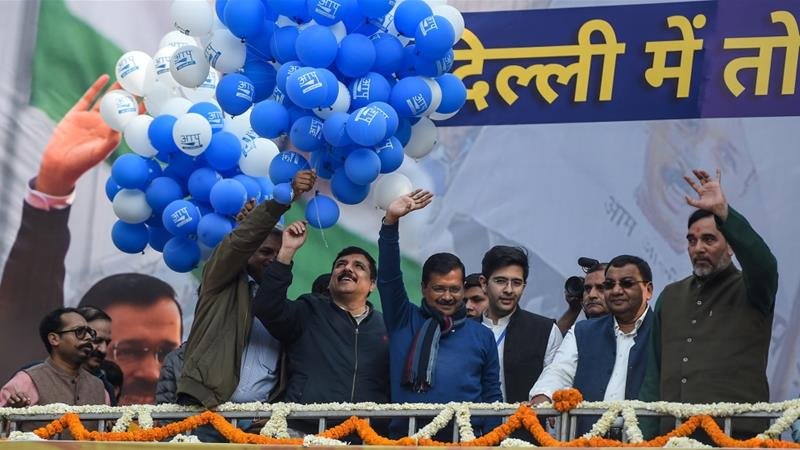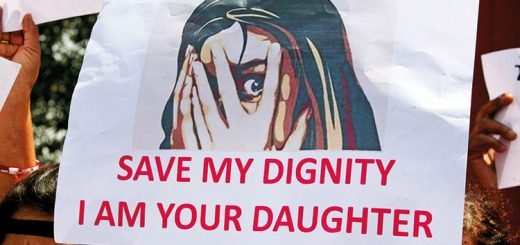Delhi Elections and a thin line of Indian Federalism

With a sweeping victory by Arvind Kejriwal led Aam Aadmi Party (APP) in Delhi assembly elections 2020, once again has hardened the fact that there are larger differences between the national issues and regional one. Though this time Bhartiya Janta Party (BJP) has improved a little bit from the previous Delhi assembly election of 2015, where it only managed to get 3 out of 70 seats.
This is a matter of research for BJP, where it’s preparation was lacking. But the important thing is that it poses some of the concrete questions about the present structure of Indian politics. People were seen saying that “We want to see Narendra Modi at the centre but Arvind Kejriwal in Delhi” This is not so new, it has kept on happening in India and somehow reflects the very important aspect of Indian political system also.
Indian constitution-makers were of the view of making a system where India can remain with a Quasi-Federal structure supported by a strong centre. This system continued for years, but later new things added to it and things got fully changed. Whatever party made a stronghold at the center tried to impose itself to all states as well. There are many instances where it could be actually visualised also. But slowly and gradually things do change and try to take original form. People are aware of these tactics as for them, the issues are different at different levels.
The present government at the centre is in its second term, by again coming to power, winning the 2019 general elections. It was a big win, as the party won an even larger majority than in its landslide victory of 2014. However, this success was not reflected in the results of the elections to the state assemblies election. This is illustrated by the loss of seats for the BJP in a number of states, including key ones like Chhattisgarh, Rajasthan, and Madhya Pradesh. However, it still won 9/11 seats in Chhattisgarh, 28/29 in Madhya Pradesh and 24/25 in Rajasthan.

The crux is that people’s voting choices seem to be changing depending on the local issues and factors such as who is on the ballot. People have started giving more preference to the candidate rather than his parent party. Voters are also drawing a clear distinction between state and central politics and voting accordingly. A state assembly election cannot be fought on the name of National Security. Results of this can be seen in the assembly elections of Haryana, Maharashtra and Jharkhand which happened just after the gap of six months of general elections.
BJP won all of the 10 Lok Sabha seats in Haryana and secured a 58.02 percent vote share. Congress’ vote share was 28.4 percent. Whereas in the assembly election, BJP failed to win a majority on its own. It won 40 of the total 90 seats in the House. Congress won 31 seats. BJP secured 36.5 percent votes to finish ahead of Congress’ 28.1 percent.
In Maharastra, the BJP-Shiv Sena alliance had won 41 of the 48 seats (about 85 percent seats). Together their vote share was over 50 percent. However, in assembly elections, it fell to around 42 percent. In terms of the seats, the BJP-Sena pre-poll alliance had secured 169 of the 288 seats (about 58 percent seats).
In Jharkhand, BJP had won 11 of the 14 parliamentary seats in the state. BJP’s vote share itself was about 50.9 percent. However, in the assembly election, BJP managed to win just 25 of the total 80 seats. Its vote share plummeted to 33.4 percent. On the other hand, the Congress and JMM alliance bagged 46 seats. Their vote share jumped to 32.5 percent votes from a combined vote share of 27.4 percent.
While the spheres of power between the states and the centre are clearly demarcated in the Indian Constitution, certain areas of policy are shared between the two. The Center often has a prerogative over the states in decision-making in these domains. This has been a frequent issue of discord among the states. Center must ensure that this power scuffle will lead to impact not only the states but moreover on the centre itself.
BJP’s electoral campaign was heavily focused on strengthening the framework of the Indian federalism. In their manifesto, they had outlined several key action points to this effect. However, they skipped some of the promises and these are somewhere haunting the future of BJP in states assembly. People are having sentiments regarding their state identity. Their issues are different and expectations are also different. This is the start of outlining the new lines of Indian federal structure, where people would have the choice to choose differently for a different purpose.



















